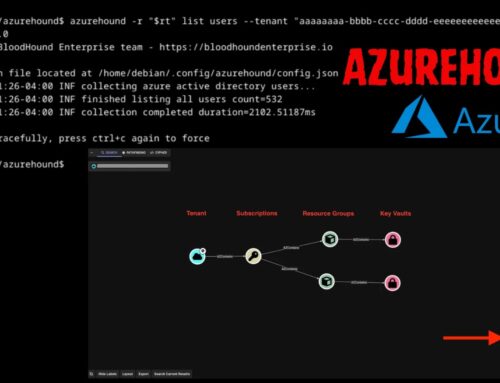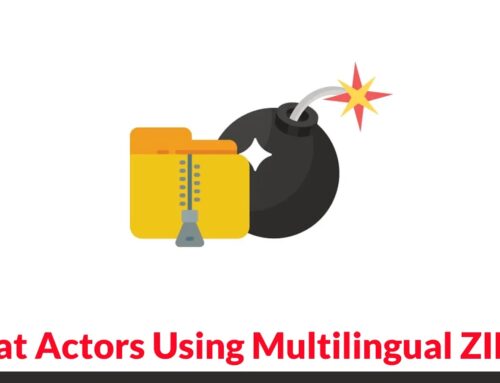
Confucius Hacker Group Attacking Weaponizing Documents to Compromised Windows Systems With AnonDoor Malware
The digital battlefield is constantly shifting, and one formidable adversary, the Confucius hacker group, has unveiled a new weapon in their arsenal. For organizations and cybersecurity professionals, understanding these evolving threats is paramount. This persistent threat actor, known for its targeted campaigns, is now weaponizing seemingly innocuous Office documents to deliver a sophisticated Python-based backdoor dubbed AnonDoor, compromising Windows systems with alarming efficiency.
Confucius Group: A History of Calculated Aggression
Active since 2013, the Confucius hacker group has consistently demonstrated a cunning approach to cyber espionage. Historically, their modus operandi often involved deploying document stealers like WooperStealer, focusing on data exfiltration. However, this latest evolution signifies a strategic shift towards a more enduring and stealthy presence within compromised networks. Their activities typically target entities in South Asia, including government agencies and military personnel, indicating a clear geopolitical motivation.
AnonDoor: The New Python-Powered Backdoor
AnonDoor represents a significant upgrade in the Confucius group’s capabilities. This new Python-based backdoor is designed for stealth and persistence, offering attackers robust control over compromised Windows endpoints. Its architecture likely allows for various malicious activities, including:
- Remote Code Execution: Executing arbitrary commands on the victim’s machine.
- Data Exfiltration: Stealing sensitive information from the compromised system.
- Persistence Mechanisms: Establishing a long-term presence to maintain access.
- Lateral Movement: Spreading to other systems within the network.
The use of Python for AnonDoor is noteworthy, as it offers cross-platform compatibility (though currently targeting Windows) and can be easily obfuscated, making detection more challenging for traditional signature-based security solutions.
The Multi-Stage Infection Chain: A Sophisticated Approach
The Confucius group is no longer relying on simple document stealers. Their current campaigns leverage a sophisticated multi-stage infection chain to deploy AnonDoor. This intricate process often begins with highly crafted spear-phishing emails containing malicious Office documents. The stages typically involve:
- Weaponized Office Documents: These documents exploit various techniques to initiate the infection. This could involve macros, but the report specifically mentions OLE-embedded scripts, which can execute code when the document is opened.
- VBScript Droppers: Once the initial script executes, it often drops and executes a VBScript. This VBScript acts as an intermediary, further downloading and executing subsequent stages of the malware.
- Loader for AnonDoor: The VBScript typically retrieves and executes the main AnonDoor payload, establishing the backdoor on the compromised system.
This multi-stage approach adds layers of obfuscation and complexity, making it harder for security tools to detect and analyze the full attack chain at each step.
Remediation Actions and Prevention Strategies
Defending against advanced persistent threats like the Confucius hacker group requires a multi-layered security strategy. Organizations must proactively address vulnerabilities and implement robust protective measures.
- User Awareness Training: Educate users about the dangers of spear-phishing, malicious attachments, and social engineering tactics. Emphasize scrutinizing sender legitimacy and avoiding enabling macros from untrusted sources.
- Endpoint Detection and Response (EDR): Deploy EDR solutions to monitor endpoint activities, detect suspicious behaviors, and respond to threats in real-time. This can help identify the execution of OLE-embedded scripts or unusual VBScript activity.
- Network Segmentation: Isolate critical systems and sensitive data to limit the impact of a potential breach and prevent lateral movement.
- Principle of Least Privilege: Implement strict access controls, ensuring users and applications only have the minimum necessary permissions to perform their functions.
- Patch Management: Regularly update operating systems, applications, and security software to patch known vulnerabilities. While this attack doesn’t rely on specific CVEs mentioned in the provided source, maintaining a patched environment reduces the overall attack surface.
- Email Security Gateways: Implement advanced email security solutions to filter out malicious attachments and detect phishing attempts before they reach end-users.
- Disable Unnecessary Features: Configure Office applications to disable macros by default and warn users before enabling them. Consider disabling OLE object embedding if not critical for business operations.
Tools for Detection and Mitigation
Here are some essential tools that can aid in detecting and mitigating threats posed by groups like Confucius:
| Tool Name | Purpose | Link |
|---|---|---|
| Microsoft Defender for Endpoint | Endpoint Detection and Response (EDR) and Antivirus | https://www.microsoft.com/en-us/security/business/endpoint-security/microsoft-defender-for-endpoint |
| Cisco Secure Endpoint (formerly AMP for Endpoints) | Advanced endpoint security and threat prevention | https://www.cisco.com/c/en/us/products/security/endpoint-security/index.html |
| CrowdStrike Falcon Insight | Cloud-native EDR and threat intelligence | https://www.crowdstrike.com/products/endpoint-security/falcon-insight-xdr/ |
| Proofpoint Email Protection | Email security gateway for anti-phishing and malware detection | https://www.proofpoint.com/us/products/email-protection |
| Splunk Enterprise Security | SIEM for security analytics and incident response | https://www.splunk.com/en_us/software/splunk-enterprise-security.html |
Key Takeaways
The Confucius hacker group’s shift to weaponized documents to deliver the AnonDoor malware underscores the ongoing evolution of cyber threats. Organizations must adopt a proactive and multi-faceted security posture to defend against these sophisticated attacks. This includes rigorous user training, robust endpoint security, network segmentation, and diligent patch management. Staying informed about the adversary’s tactics, techniques, and procedures (TTPs) is crucial for developing effective defensive strategies.





